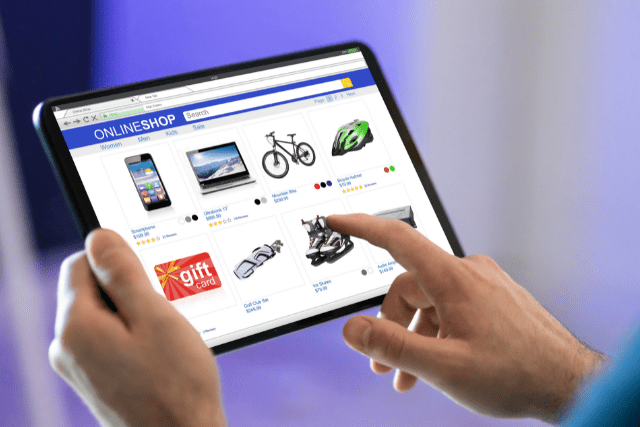Having a solid online presence is crucial for e-commerce success, and crafting SEO-friendly product titles is one of the most important elements. These titles are not only pivotal for improving search engine rankings but also play a significant role in attracting and converting potential customers.
This guide will explore the essential elements of SEO-friendly product titles, provide actionable tips and examples, and highlight tools and strategies to keep your product listings ahead of the competition.
Why SEO-Friendly Titles Matter?
Search engines like Google use product titles to understand the content of your page. An optimized title increases the likelihood of your product appearing in relevant searches, which is essential for visibility and attracting potential buyers.
Importance of SEO-Friendly Titles
Optimized product titles are crucial for several reasons:
- Improving Search Rankings: Search engines prioritize well-optimized titles, leading to higher rankings.
- Enhancing Click-Through Rates (CTR): Clear and appealing titles attract more clicks from search engine results pages (SERPs).
- Boosting Sales: Higher visibility and CTR increase traffic and potential conversions.
Key Elements of an SEO-Friendly Title
Creating an effective product title involves several key elements:
- Primary Keyword: Include the main keyword you want the product to rank for. This helps both search engines and customers understand what your product is about.
- Example: “Running Shoes” should be the primary keyword for a pair of running shoes.
- Brand Name: Including your brand name, especially if it is well-known or has a loyal customer base, can enhance credibility and attract clicks.
- Example: “Nike”, “Adidas”
- Product Type: Clearly mention the product type to match the search intent of users looking for specific items.
- Example: “Laptop”, “Smartphone”
- Attributes: Mention key characteristics such as color, size, and material. These details help refine search results and attract specific customer segments.
- Example: “16GB RAM”, “Stainless Steel”
Structuring Your Product Titles
To create effective titles, consider the following structure:
Keep It Concise
Product titles should ideally be between 50-60 characters. This ensures that the entire title is visible in search engine results and doesn’t get cut off.
- Example: “Apple iPhone 13 – 128GB, Black”
Prioritize Information
Place the most essential information, like the primary keyword and brand name, at the beginning of the title to capture immediate attention.
- Example: “Samsung Galaxy S21 – 256GB, Phantom Gray”
Use Separators
Use hyphens or pipes (|) to separate different elements of the title, making it more readable and scannable.
- Example: “Sony WH-1000XM4 | Wireless Noise-Cancelling Headphones”
Best Practices with Examples
Example 1: Running Shoes
- Before: “Shoes for Running”
- After: “Nike Air Zoom Pegasus 37 – Men’s Running Shoes – Black”
In this example, the optimized title includes the brand name (Nike), product type (Running Shoes), model (Air Zoom Pegasus 37), and key attribute (Men’s, Black).
Example 2: Laptop
- Before: “Laptop with 16GB RAM”
- After: “Dell XPS 13 Laptop – 16GB RAM, 512GB SSD, Intel i7”
Here, the title includes the brand name (Dell), model (XPS 13), and essential specifications (16GB RAM, 512GB SSD, Intel i7), making it more descriptive and attractive to potential buyers.
Common Mistakes to Avoid
Keyword Stuffing
Overloading the title with keywords can make it look spammy and reduce readability. Aim for a natural flow of words.
- Example: “Buy Cheap Nike Running Shoes Online – Best Running Shoes for Men”
Vague Descriptions
Avoid using generic descriptions. Be specific about the product’s features and benefits.
- Example: “High-Quality Shoes”
Ignoring Mobile Users
Ensure your titles are mobile-friendly. With the increasing number of mobile shoppers, it’s crucial to have titles easily readable on smaller screens.
- Example: “Short and concise titles that fit mobile screens”
Tools to Help Craft SEO-Friendly Titles
Several tools can assist in creating and optimizing product titles:
- Google Keyword Planner: Helps find relevant keywords and understand their search volumes.
- Ahrefs: Offers insights into keyword difficulty and competition.
- Yoast SEO: Provides real-time analysis and suggestions for optimizing titles and descriptions.
Detailed Insights into Crafting SEO-Friendly Titles
Understanding Your Audience
Before crafting your product titles, it’s essential to understand your target audience. Knowing their search behavior, preferences, and the terms they use can significantly impact your title’s effectiveness.
- User Intent: Determine what potential customers are looking for when they search for products like yours. Are they searching for specific brands, features, or general product types?
- Example: Users searching for “budget smartphones” are likely looking for affordable options with decent features.
- Keyword Research: Utilize tools like Google Keyword Planner and Ahrefs to find relevant keywords for your target audience. Focus on long-tail keywords that are more specific and less competitive.
- Example: Instead of just “laptops,” target “lightweight laptops for students.”
Crafting Titles for Different Platforms
Different e-commerce platforms have unique requirements and best practices for product titles. Here are some guidelines for popular platforms:
Amazon
- Character Limit: Amazon allows up to 200 characters for product titles, but it’s best to keep it concise and within 150 characters.
- Brand and Model: Always start with the brand name followed by the model.
- Attributes: Include important product attributes like size, color, and quantity.
- Example: “Samsung Galaxy S21 5G – 128GB – Phantom Gray – Unlocked”
eBay
- Character Limit: eBay allows up to 80 characters for product titles.
- Keywords: Place the most critical keywords at the beginning of the title.
- Readable: Use capital letters sparingly and ensure the title is easy to read.
- Example: “Apple MacBook Pro 16-inch – 16GB RAM – 512GB SSD – Silver”
Shopify
- SEO Optimization: Since Shopify stores rely heavily on SEO, ensure your titles are optimized for search engines.
- Consistent Format: Maintain a consistent format across all product titles.
- Detailed Descriptions: Use detailed and descriptive titles to attract search engine traffic.
- Example: “Organic Cotton T-Shirt – Men’s – White – Size L”
Enhancing Readability and Appeal
The readability and appeal of your product titles can influence click-through rates and conversions. Here are some tips to enhance these aspects:
- Avoid All Caps: Using all capital letters can make titles hard to read and may come across as shouting.
- Example: “SAMSUNG GALAXY S21” vs. “Samsung Galaxy S21”
- Use Numerals: Numbers are more accessible to scan than words, so use numerals for specifications.
- Example: “10MP Camera” instead of “Ten Megapixel Camera”
- Be Specific: Specific titles are more informative and can attract users who know exactly what they want.
- Example: “Stainless Steel Water Bottle – 500ml – Blue”
Examples of Effective Product Titles
Example 1: Kitchen Appliances
- Before: “Blender”
- After: “Oster Pro 1200 Blender – 7 Speeds, 1200 Watts, Dual Direction Blade”
The optimized title includes the brand name (Oster), model (Pro 1200), and key attributes (7 Speeds, 1200 Watts, Dual Direction Blade).
Example 2: Home Furniture
- Before: “Sofa”
- After: “Ashley Furniture Signature Design – Larkinhurst Traditional Sofa – Earth”
Here, the title includes the brand name (Ashley Furniture), collection (Signature Design), model (Larkinhurst), and critical attribute (Traditional, Earth).
Monitoring and Updating Product Titles
The work doesn’t end once you’ve crafted your product titles. Regular monitoring and updating are crucial for maintaining and improving SEO performance.
- Performance Tracking: Use tools like Google Analytics and Search Console to track the performance of your product pages. Monitor metrics like click-through rates (CTR) and conversion rates.
- Example: If a product’s CTR is low, consider revising its title to be more engaging.
- A/B Testing: Conduct A/B tests to compare different versions of product titles and determine which performs better. This can provide valuable insights into what resonates with your audience.
- Example: Test variations like “Buyer’s Choice – Samsung Galaxy S21” vs. “Top Rated – Samsung Galaxy S21.”
- Regular Updates: SEO trends and user preferences change over time. Regularly update your product titles to reflect the latest trends and maintain relevancy.
- Example: Update titles with new keywords based on current search trends.
Future Trends in SEO-Friendly Product Titles
As SEO continues to evolve, staying ahead of the trends is essential for maintaining a competitive advantage. Here are some future trends to watch:
Voice Search Optimization
With the rise of voice assistants like Alexa and Google Assistant, optimizing product titles for voice search will become increasingly important. Use natural language and question-based phrases.
- Example: “Best Running Shoes for Marathon Training”
AI and Machine Learning
Leveraging AI tools can help create more effective product titles by analyzing large datasets and providing insights into user behavior and preferences.
- Example: Using AI-driven tools to suggest optimal keywords and title structures.
Personalization
Personalized product titles that cater to individual user preferences and search history can enhance relevance and engagement.
- Example: “Top Picks for You – Nike Air Max 270”
Mobile Optimization
As mobile shopping grows, ensuring that product titles are mobile-friendly and easily readable on small screens will be crucial.
- Example: “Compact and clear titles that fit mobile displays”
Final Thoughts
Crafting SEO-friendly product titles requires a blend of keyword optimization, clear structure, and relevant details. By following these best practices, you can enhance your product’s visibility in search engines, attract more potential buyers, and ultimately increase your sales.
For further reading on SEO practices, you can visit Moz’s SEO Learning Center.
FAQs
What is the ideal length for an SEO-friendly product title?
The ideal length is between 50-60 characters to ensure the title is fully visible in search results.
How often should I update my product titles for SEO?
Regular updates are beneficial, especially if there are changes in popular search terms or new product attributes to highlight.
Can I use brand names in my product titles?
Yes, including brand names can enhance credibility and attract brand-loyal customers.
Is it necessary to include product attributes in the title?
Yes, mentioning attributes like color, size, and material helps in attracting specific customer segments and improving search relevancy.
What are some tools to help optimize product titles?
Tools like Google Keyword Planner, Ahrefs, and Yoast SEO can provide valuable insights and suggestions for title optimization.
How can I make my product titles more mobile-friendly?
Ensure that your product titles are concise and clear, with essential information presented early in the title, to fit better on smaller screens.







